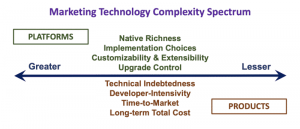For ecommerce websites, conversions are crucial. Not just for success, but for survival. Your business cannot function for long if you’re not generating enough sales to meet your costs. So it’s only natural to look for ways to optimize your site to drive more sales.
In this post, you will learn about some of the most important aspects to focus on when optimizing for conversions. Here are some areas that need to be optimized if you plan on increasing your ecommerce conversion rates:
#1. User Experience
Does your website ensure a good user experience? If not, it could be affecting your conversion rate.
For example, if your website takes too long to load, shoppers could get frustrated and switch to your competitors’ sites. Ideally, your page should load within 2 seconds or less to ensure a good user experience.
Use the Pingdom Website Speed Test to check how fast your pages load. The tool won’t just test the speed of your website. It also detects problem areas that affect your load speed. This can help you determine what you should do to ensure a faster load time.

In addition to speed, navigation is another factor that impacts user experience. Categorize your products, and arrange page elements in a logical manner so shoppers can easily find what they’re looking for.
Check out the Nordstrom website, for example. People can easily find what they’re looking for by choosing from the different categories. They can even shop based on brands or trends. And if they already know what they’re looking for, they can just use the search box in the top right corner.

Once shoppers have found a product they like, and are ready to checkout, are there any other factors that could prevent them from completing the purchase?
Maybe your checkout process is a hassle, with too many steps involved. Perhaps they don’t like the idea of submitting lots of information, and creating a new account just to buy one product. You can simplify the process with a one-step checkout option to further enhance their experience.
Sometimes customers abandon their carts simply because they were required to sign up. Give them the option to checkout as guests, or to sign in with their social media accounts. The idea is to simplify the checkout process while still collecting the most crucial information necessary to complete the purchase.
ASOS gives first time shoppers the option to sign up using their social media accounts. But shoppers can also checkout as guests by clicking on the, “Continue to Checkout” button.

#2. Trust Factor
People are unlikely to spend money on your products if they do not have a sense of trust and confidence in those products. Even when consumers haven’t heard of your brand or website, you can earn their trust by adding a few elements to your site.
For example, adding user-generated content, such as reviews from previous customers or testimonials from clients is an effective way to build trust.
In fact, user-generated content has been known to significantly boost ecommerce conversion rate. The exact impact differs from industry to industry. But on average, ecommerce websites experience a 161% increase in conversion rates after adding user-generated content to their site.

The most popular forms of user-generated content are reviews and ratings. You can easily include these on your product pages. Just make sure that your top reviews are prominently displayed.
As you can see in the screenshot below, Amazon does a great job of this by displaying the most helpful reviews first. This helps guide their customers’ purchase decisions.

Another helpful optimization is to display user-generated content in the form of photos. You can include the option to add photos along with customer reviews. Or you can ask customers to submit photos of the product they bought. You can then post these submissions on your website as a form of social proof.
Fashion retailer, ASOS, invites their customers to submit photos of themselves wearing products they purchased from the store. Users can do so by clicking the “Add Look” button on the brand’s website, or by posting the photos on Instagram with the hashtag, “#AsSeenOnMe.” As you can see in the screenshot below, ASOS then showcases some of the “looks” on their website.

Another element that can help improve your trust factor is secure shopping trust marks, which assure shoppers that their transactions are secured. After which you can add trust badges and guarantee badges to further enhance your trust factor.
#3. Shopping Experience
User experience focuses on ensuring that shoppers have no trouble navigating your site. Shopping experience focuses more on convincing potential customers to complete a purchase.
When optimizing user experience, you should improve the basics on your site, such as navigation, search, page speed, etc. When optimizing shopping experience, you are looking to improve other elements, such as images/visuals, product descriptions, and product promotions.
One of the first steps to improve the shopping experience on your site is to optimize your product descriptions. Highlight the unique selling points and features of each product so shoppers have a good idea what they’re buying. Try framing your product descriptions in ways that resonate with your audience, as opposed to using generic descriptions.
In addition to your descriptions, you can provide product/buying guides to further improve the shopping experience on your site. While utilizing general descriptions and details about their products, Memebox goes one step further by providing shoppers with information on how to use each product.

Visuals also have a huge impact on the shopping experience. Make sure your product images are high quality, and that they clearly show the product’s features. You can also showcase product videos to further enhance the shopping experience. They could be basic promotional videos, review videos, or videos on how to use the product.
Conclusion
If you want to increase your ecommerce conversion rates, start by optimizing the three areas above. As you may have noticed, there are multiple aspects involved in each area. You may not need to improve all of these elements on your website. For example, if your website speed is already top notch, you can skip that step and move on to the next conversion rate optimization technique. Any questions about the tips outlined here? Let me know in the comments below.
Digital & Social Articles on Business 2 Community(52)






